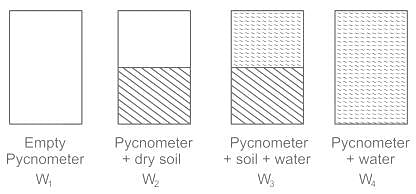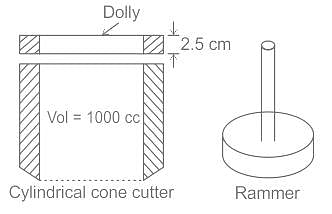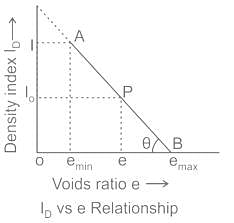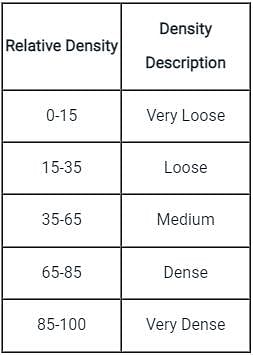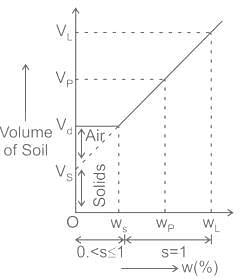Test: Index Properties - Civil Engineering (CE) MCQ
10 Questions MCQ Test - Test: Index Properties
The three-phase diagram of the partially saturated soil sample is given in the figure. Determine the degree of saturation of the soil.


In the geotechnical engineering lab, the pycnometer is used for the determination of
| 1 Crore+ students have signed up on EduRev. Have you? Download the App |
Based on Fuller's maximum density criterion, for 4 mm maximum size of soil particles, what is the percentage of particles between 4 mm and 2 mm, by weight?
As per IS, the internal diameter and height of the steel dolly used in core cutter test are __________ respectively.
A soil sample with specific gravity of solids 3 has a mass specific gravity of 2. Assuming the soil to be perfectly dry, determine the void ratio.
The void ratios at the densest, loosest, and natural states of a sand deposit are 0.2, 0.6, and 0.4, respectively. The relative density of the deposit is:
A soil has a bulk density of 22 kN/m3, water content 10%, the dry density of soil is -
The total unit weight of the glacial outwash soil is 5 kN/m3. The water content in the soil is 17%. Find dry unit weight
At which consistency limit, further reduction of the water content will not decrease the volume of soil mass?




